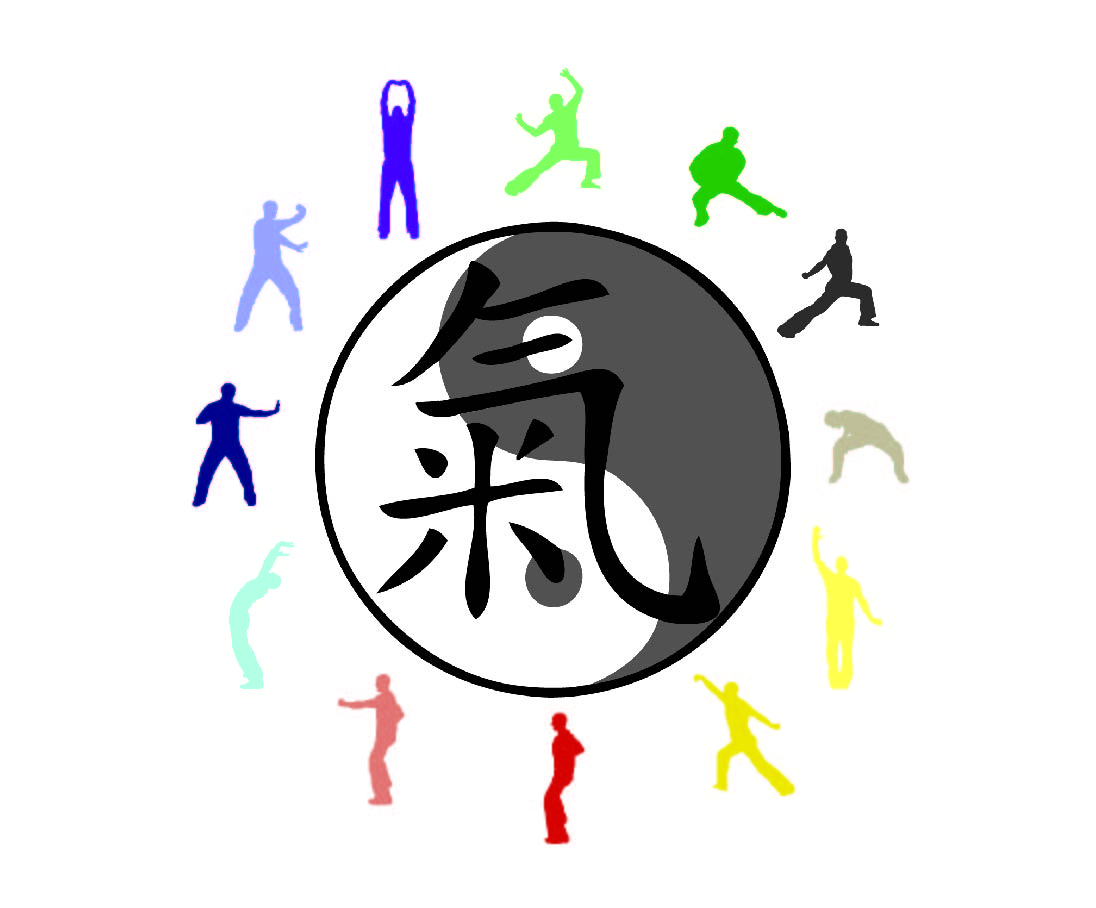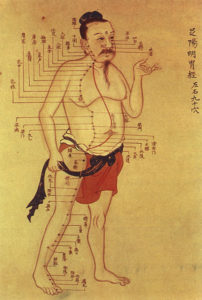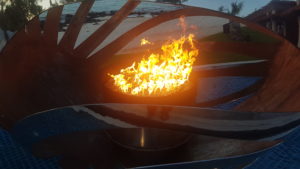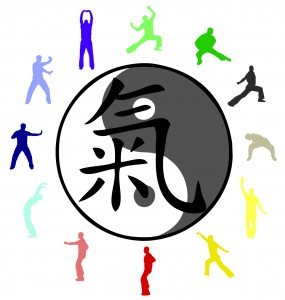
You can see the vlog on this subject in the video below, otherwise read on…
Acupuncture Charts and the Chinese Meridian Clock
If you have ever looked at an acupuncture chart, you may have noticed that as well as the location of important points along the meridians, there are other notes as well. One small note you will often find is the time of peak activity of each meridian and the underlying organs. In Chinese medical theory there is a concept of a meridian clock or wheel (also known as the horary clock), which indicates a flowing of energy from one meridian to the next on a regular schedule, and in a regular order throughout each day. Each meridian has a time when it is most full of energy, before this subsides and moves onto the next meridian. You can think of this a bit like a tide of energy that moves through the systems of the body. All of the meridians should have energy flowing through them all of the time, but there is a smooth pattern of increase and decrease of this level of energy, so at any time there will be one meridian at ‘high tide’ with a peak fullness of energy, and all the other meridians will be at varying lower levels of energy.

Understanding this tide of energy through the body can be very useful to make treatments such as acupuncture, which works with directing the flow of energy, more effective, as well as helping to achieve optimal wellbeing and harmony with the environment around you.
Unfortunately often this information on the times of peak energy activity are presented without explanation, so it is just a piece of information to memorize, which makes the information hard to retain, and more difficult to understand how to apply effectively.
This article will give a practical explanation of the meridian clock, so that you can understand apply the underlying principles effectively into your life, including getting the most benefit from your qigong practice.
We will do this in the form of a little story about a typical day for someone living a simple natural life, connected to the natural environment around them. Essentially a typical day for someone living in a prehistoric setting, before modern conveniences made it easier for us to insulate ourselves from the natural environment around us.
5-7am
We will start with the beginning of the day. In a natural environment the natural time to wake up and start to become active is when the sun rises. Usually, on average, this will be somewhere between 5 and 7am depending on the season. When we wake up, the natural thing is to stretch a little, and then start to move around, maybe go for a walk or something. If we are fully healthy and in tune with the natural rhythms of our body and the environment around us, as we get up and start to move around, we will get the urge to use the bathroom, we may want to urinate, but also in particular we will feel to empty our bowel. So 5-7am is the time of peak activity and energy flow for the Large Intestine, as the energy moves into this organ to support this important activity of elimination.

Hopefully you have this natural rhythm functioning healthily in your body. Unfortunately many people do not though due to factors in modern life such as diet, poor sleep and exercise patterns and so on. If you have a pet such as a dog though, often these patterns are still very strong and we can identify the patterns clearly in them. When a dog wakes up it usually wants to go outside immediately for a walk. The gentle movement of the walking then prepares them so that they also want to empty their bowels before returning inside.

If you don’t currently have this rhythm working well in your body for you, if you make healthy changes to your lifestyle to be more in harmony with nature, little by little the natural patterns will return. Qigong can be a really useful way to help re-establish those patterns. We will talk about that more a bit later.
7-9am
When we return from our morning walk, having emptied ourselves out, there is now space inside our bodies, and we are likely to feel hungry and want to eat something. So 7-9am is the time of peak activity for the Stomach. If we have had a good night’s sleep, it will have been quite a while since we last ate anything, so in particular our body will want something that it can quickly turn into energy to start to fuel us for the day. This means carbohydrates, as these are the nutrients that burn and give us energy the most quickly. This is at least partly why many of the foods we think of as traditional breakfast foods are high in carbohydrates, fruit, toast, oatmeal, because we are naturally drawn to these foods first thing in the morning.

This doesn’t mean you have to have a BIG breakfast in the morning. It also doesn’t mean you have to just eat carbohydrates at this time. Remember all of the organs and meridians will be active all the time to a greater or lesser extent, so you can eat other foods if you have the desire or a particular need. But the natural cycle of your bodies energy and your overall wellbeing will benefit if you eat at least a small amount of carbohydrates in the morning to get your energy and metabolism going.
9-11am
Once we have eaten, our body starts to move the nutrients from our meal into our bloodstream so we can use them throughout our body. In particular the first of these nutrients to be extracted and used are the carbohydrates – making what we popularly call ‘blood sugar’. Chinese medicine understands that it is the Spleen (also related to the Pancreas) that has this important role of moving the energy or nutrients from the stomach into the blood.
11-1pm
As our blood sugar levels rise and nutrients start to reach all of the cells and muscles of our bodies, we are ready to be more physically active. We are ready to get our days work done. In more primitive time work was almost always physical in nature. As we move our bodies more, the blood needs to be pumped around our body more quickly to bring fuel to the cells. So 11-1pm is the time of peak activity for the Heart.
You can use this principle to plan your schedule if you do have hard physical work to do. And if you already have a hard physical job, or you know people who do, if they have control over their schedule there is a good chance that they do this instinctively already. Construction workers, farmers, and people with similar types of jobs often try to get the hardest physical work done in the mid no late morning. Not first thing, because that would be too much of a shock to the system, and not too late in the afternoon, because when fatigue sets in you make slower progress and are more likely to make mistakes or cause injury. They plan and set up early in the morning, do the hard stuff mid to late morning and possibly into the early afternoon, then the later afternoon is for tidying up and finishing off.

If you are able to implement this into your routine you will be safer, more productive, and your health and energy will also benefit.
1-3pm
In nature your main work each day is to simply find food. Depending on your dietary preferences this might mean chasing down an animal, or climbing some trees, or walking long distances to forage for various plants and seeds. Regardless, if you have had a successful morning, in the afternoon you will have obtained something more substantial to eat. This means protein. So from 1-3pm is the time of peak activity for your Small Intestine which has an important role in protein digestion and absorption.


3-5pm and 5-7pm
Life was simple in prehistoric times. If you managed to get some food together for a decent meal, that was most of your work done for the day. It was time to start to slow down and relax a little. This meant you had time to find your way to a water source and have a good long drink. Maybe you managed to drink a little water at some other times of the day, but in general water was not as conveniently available as it is these days with indoor plumbing and convenient sipper bottles always at the ready. So animals and humans alike usually needed to make a special trip to the watering hole to properly rehydrate. So 3-5pm is the time of peak activity for the Bladder, and 5-7pm for the Kidneys.
If possible you wanted to go to the watering hole while it was still warm, and while it was still light. Drinking cool water in the warmth of the day isn’t too bad, in fact it can be quite refreshing. Drinking cool water once the son has set and the air starts to chill can be a bit of a shock to the body and cause internal tension as you body works to warm the water inside you while also keeping the rest of your body warm. Also every creature knew that all the animals had to make their way to the watering hole at some point, including the predators. Watering holes were rich hunting grounds for them, so you definitely wanted it to still be light when you visited so that you could see clearly what is going on around you.

This natural instinct for our bodies to take in fluids and rehydrate during this mid to late afternoon period is still reflected in some of our cultural habits. Afternoon tea, and after work drinks are examples of how we unconsciously still try to support our natural rhythms. It is interesting that while we sometimes think of this knowledge of natural rhythms as something as ancient and eastern, or from other cultures, all cultures have this knowledge embedded in them to a greater or lesser extent if we know where to look, including Western ones.
7-9pm and 9-11pm
So it starts to get dark, and a bit cooler. Its time to go back to the cave, or the tent, where ever your place of rest and shelter is. When you return to your place of shelter it is likely that you meet up with members of your family or tribe that you haven’t seen all day. It is natural at this time as you meet up and maybe sit around the campfire, to enquire into each other’s wellbeing, and share your stories of the day. As you share your experiences of the day, it gives you a chance to a certain extent to re-live them and finish processing them. You are able to process and let go of any residual tensions or patterns left in your body and energy, especially if some of those experiences were stressful or traumatic.

There is an old saying, that a problem shared is a problem halved. To take this further you could say that a problem expressed and shared is a problem processed. 7-9pm is the time of peak activity for the Circulation/Sex/Pericardium, and 9-11pm for the Triple Warmer. These two are not concepts we are familiar with in western thought, but essentially they have an important role in maintaining the health and harmony of all of the other organs. Each organ in our body has a role in experiencing different emotions as we respond to different situations around us. Sometimes our experiences can leave us with energy or tension built up in different organs relating to the emotions of those experiences. As we express and relive our experiences, we release, harmonize and balance the activity in all of the organs.
In terms of food, if we have eaten really well during the rest of the day, we may not particularly want to eat again at this time. Alternatively it may be a time when we make a more complex meal, combining all of the different nutrient types (and higher levels of activity in all the different organs), to share with others. But the main thing is that the evening time is naturally a social time. A time to talk and share, and experience each other’s company. In a way this social contact is another important kind of nutrition for our energy.

11-1am and 1-3am
It starts to get late. The campfire starts to die down. It is time to sleep. If you want to keep a fire burning through the whole night (for reasons of warmth and safety – scaring away predators), this is when you would put the big logs on the fire. They will burn more slowly, but they will keep the fire going at a low rate until morning. If you look at our pattern of nutrient consumption during the day, we started out focusing on carbohydrates. These convert quickly into energy, so they are like kindling, small thin pieces of wood to start our internal fire up. Later in the day after we had been physically active, so our fire was well and truly lit, we focussed on protein, something more substantial that will burn slower and longer. This is like the bigger sticks to keep the fire going. Now it is late, fats are like the big logs that will burn slowly through the night. Fat has twice as much energy per gram as carbohydrates or protein, but it does burn more slowly. So 11-1am is the time of peak activity of the Gallbladder, and 1-3am the Liver, both of which have important roles in the breakdown and metabolism of fat.
These fats could come from the more complex meal that you ate in the evening, or they could come from the fats that you have stored in your body from earlier in the day or previous days. One way or another this late night/early morning is the time when our body most efficiently breaks these down and used them, and our body does this best when we sleep. There are certain hormonal changes that occur when we sleep that help with this process, and it is interesting to note that those who are either severely obese, or severely underweight often have difficulty sleeping at night. This lack of sleep then affects their hormone levels and becomes a reinforcing pattern within them. So sleeping well, particularly during the late night/early morning hours is very important for the regulation of your bodies energy stores and maintenance of healthy body weight.

3-5am
We’re peacefully sleeping through the night, and then in the early morning, before the sunrises, the temperature around us drops. We need to do something to counter this cold and keep our bodies warm. In our modern lives with climate controlled homes, we may not even notice this natural change in temperature in the early morning, or at worst we may just pull our blankets up a little more when this happens. But in a natural environment/prehistoric times, we may not have this luxury. If our body is functioning in harmony with the rhythms of nature, it has a solution though. It will naturally go through a period of deeper heavier breathing in the early morning. To some extent this massages all of the organs and makes them a little more active, which in turn makes us warmer. It is a bit like using a bellows to blow air onto a flame that has died down to spark the embers back into life. So 3-5am is the natural time of peak activity for the Lungs.
Of course in a primitive environment, or even an older house, we may actually go through this process of blowing on the embers to bring a fire back to life. But even without that need in our shelter, our body needs this because it prepares us for the next steps of clearing out the old ashes (5-7am – Large Intestine), and making space for new fuel (7-9am – Stomach). If our body is fully healthy and in tune with nature it will do this deep breathing completely instinctively even when we sleep. Again, if you have a pet and observe it closely through the night, you may see that it still has this pattern intact. But this time is also really well suited to breathing exercises and qigong practice if you are awake at this time.
Harmonizing ourselves with nature through qigong practice
Well that completes our cycle. I hope that this has given you a clearer understanding of what can seem to be an obscure aspect of Chinese medical and qigong knowledge. It is really quite simple when we understand where the pattern naturally comes from. You can apply this to your life by as much as possible structuring your activities so that they fit with this natural pattern. The time periods of activity are quite wide for each organ, and in fact you can often just focus on the organs in pairs as we did when describing some of the pairs in the article above. This gives you a four hour window to allow our bodies energy to focus on each type of activity. So for example that would mean breakfast somewhere between 7 and 11am as the Stomach and Spleen are both part of the earth element. Hopefully that isn’t too hard to achieve…

We can also use qigong as a way to help harmonise ourselves with this rhythm. The Twelve Rivers qigong exercises from Long White Cloud Qigong teach one exercise for each of the organ meridians in your body. These exercises massage the organs internally, stimulate the flow of energy in the related meridian, and balance the posture and emotions relating to that meridian. They are simple movements, but quite sophisticated and powerful in their effect. When we practice these exercises so that they correspond to the time of day that we are practicing, they balance the activity in our body, and retune it to match the energy in our natural environment. There are two ways we can do this. We can practice each exercise during the time of peak activity of the related organ and meridian to strengthen its activity at the appropriate time. Or we can practice all of the exercises at one time, starting with the organ that should be at peak activity and going through them in order until we get back to the same organ again that correlates to the time of day. This leads the energy all the way through the cycle so that not only is the energy strengthened in the organ for that time, but also all of the other organs are strengthened and cleared so that the energy can flow freely and easily into them as you continue through your day. With regular practice this greatly strengthens your body’s ability to stay in tune and in time with the energy of the natural environment around you.
This video shows you the Twelve Rivers qigong practice. You can follow along if you like!
Fine Details
A common question about this 24 hour Chinese meridian clock and the movement of energy in the meridians is “What about daylight savings?”, or other questions of this nature. The times laid out above are broad approximated times, and are in almost all cases plenty accurate enough to guide our habits and qigong practice. There are also much, much, much more complex charts that take into account the season, the precise day of the year, where the moon is, and so on, to calculate much more accurately the pattern of flow of the energy and times of transition. This very detailed information is sometimes used therapeutically for very fine tuned interaction with the energy flow using acupuncture or other therapies, but is usually more complex than is useful for general qigong practice. It is helpful though to know that the pattern does change with the seasons, so it is completely natural to get up later in the mornings when it is dark for longer in winter, and so on. It is healthy for us to pay attention to these bigger cycles in nature and adjust our habits to fit with them as well, not just the daily rhythm.
Exceptions
After the last vlog, someone asked a good question:
“But what about the best time of practising Qigong in areas where sun doesn’t rise for 2 months in the winter (darktime), like now? And doesn’t set for two months during summer (midnightsun). I live in the North of Norway.”

That is an interesting case which clearly to some extent falls outside the paradigm of bodily functions and energy flow being guided by the movement of the sun and the accompanying changes in the energy in the natural environment that go along with that. Probably the most natural pattern in this environment would be to sleep for two months like some animals and many plants effectively do… but humans aren’t really designed for hibernation. And this is a wonderful thing about us as a species, we are able to adapt and change our immediate conditions to be able to still thrive in environments that would not normally support us. In these conditions, we need to find a balance between responding to the environmental cues around us and changing our immediate conditions to support a healthy life. If the sun does not rise (or set) at all for a period of time, it is up to us to set our own waking and sleeping patterns using light sources (or darkness) of our own making. In this situation it is still helpful for us to follow the general outline of the horary clock. Allowing ourselves a gentle transition into activity in the morning, similar to our own ‘sunrise’ time. Qigong practice will still be really good at this time to get everything active and flowing well. And also allowing ourselves a gentle transition into rest in the evening – like our own ‘sunset’. This will help to set a pattern for the rest of the organ functions to follow through the dark of an extended winter, or conversely the bright of an extended light summer.
To some extent this is true for people living in all parts of the world as we all use man-made devices to make our lives more comfortable, not in such and extreme way of course, but we all need to find a balance that works for us to maintain a healthy connection and balance with nature, while also thriving in our modern environment.
I hope this explanation of the Chinese meridian clock has been interesting to you. Perhaps it will give you some insights into how your body, mind and energy works. Certainly as you delve deeper into Qigong and Chinese medicine theory and application, you will find this information more and more valuable and insightful to you.
I plan to post these informative blog posts regularly this year, so make sure to come back and check the site regularly, or sign up to our mailing list below to be notified when the next one is published!
6 Comments. Leave new
I remember when you first told me this story. It is nice to see it in print as it reinforces it for me. It is a great way to deepen our connections to the organs and their functions and helps to remember their peak activity period too.
Yeah, some people have heard it and others haven’t. Always a good reminder though 🙂
Great article, thank you John! Great pictures you have drawn, and for modern times you could make a wristwatch with the horary clock image in the back so one always knows what to exercise;)
Ha ha, that is an interesting idea – meridian clock watches 🙂
Such a great explanaition and ‘story’ of the Chinese Meridian Clock, and a good way to try to rememebr their ‘time of day’ -thank you!
Awesome explanation of the meridian clock. I know now I will remember better the sequencing of the organs!